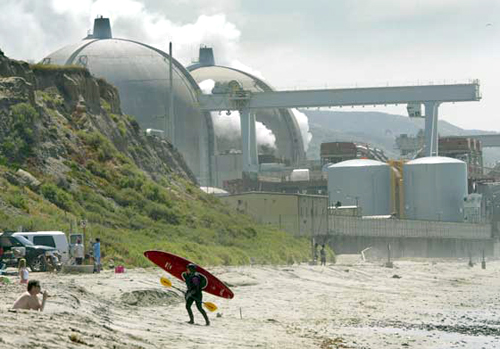U.S. nuclear disaster preparedness relaxed with minimal disclosure


UPDATED: Timing is everything. Japan's Fukushima nuclear disaster heightened safety concerns about aging nuclear reactors in the United States last spring. When the dust settled, emergency preparedness procedures were relaxed - when few would notice.
The Nuclear Regulatory Commission (NRC) and the Federal Emergency Management Agency have relaxed requirements for emergency preparedness in the first major revision of emergency planning guidelines since the Three Mile Island incident in 1979. Revisions were published without any announcement in the Federal Register during the December 2011 holiday season.
The Associated Press's Jeff Donn shined light on the changes in an article published yesterday. New rules require fewer emergency drills for major accidents and recommendations that evacuations should be scaled down with fewer people leaving their homes straightway. A new anti-terrorism response program was added.
More specifically, the AP reports that local officials will no longer be accountable to train for a radiation release. However, police must be ready for a possible assault on a reactor. The current evacuation zone structure remains in place, but elaborate 50-mile zone exercises will be held less frequently.
Last year, the AP also reported that the NRC regularly watered down safety standards- even wholly ignoring problems - when encountering violations at the nation's aging reactors. Its investigation uncovered an outwardly disturbing trend: regulations are being manipulated to allow damaged equipment to remain in place.
The report included testimony from nuclear engineers to support its findings. It cites "failed cables, busted seals, broken nozzles, clogged screens, cracked concrete, dented containers, corroded metals and rusty underground pipes." The standard for how brittle a reactor vessel can become has been weakened twice.
Leaks are prolific at U.S. nuclear sites, but NRC officials have dismissed the impact as being too insignificant to affect public health. The AP's investigation found that radioactive tritium has leaked into groundwater at three-quarters of U.S. commercial nuclear power sites.
"There has been no adverse impact on public health or safety from the release of tritium at commercial nuclear power plants. The industry takes tritium releases seriously and voluntarily implemented an underground piping integrity initiative in 2009 to better manage issues related to the integrity of underground piping," said Nuclear Energy Institute (NEI) spokesperson Tom Kauffman said, in a previous interview.
There are a total of 104 nuclear plants in the U.S today, according to NRC data. 61 were recently given another 20 years to operation. Nuclear power accounts for nearly 20 percent of electricity generated nationwide, and will be a necessary part of the energy mix well into the next century.
Relicensed U.S. plants will be operating for nearly a century by the time they finally close down, but the NRC can shut down or fine any facility that doesn't meet licensing requirements or regulations. Licenses may also be amended.
The Atomic Energy Act of 1954 permits nuclear plants to renew their operating licenses, allowing plants to stay in operation beyond the initial 40-year licensing period. All U.S. plants must comply with new NRC requirements regardless of how long they have been in operation.
In summation, U.S. nuclear facilities are aging, the regulatory goalposts are being widened, and state and local first responders will be less prepared for a disaster. The thing about disasters is that the danger is obvious after it has happened. We're all experts in hindsight.
It is worth asking, is that really what the American people want, and would an nuclear incident hamper the adoption of safer next generation nuclear technologies? Regulators should be working in the sunlight.
The NRC has responded to the AP's article here.
More nuclear coverage on SmartPlanet:
- Meet the future of nuclear power: 8 guys in China
- How nuclear will make oil greener
- Documentary: How we missed out on a “limitless” supply of an exotic nuclear power
- The new face of safe nuclear
- America’s nuclear future
- Small nuclear reactors - America’s energy future?
- U.S. nuclear safety regulations softened by industry influence
- Nuclear safety in the U.S. a slow affair
- The U.S. nuclear renaissance has begun
- India's Prime Minister: nuclear power, yes please
- Safe nuclear: Let the thorium debate begin
- Safe nuclear: India’s thorium reactor
- Joint U.S., Iranian nuclear peace plan hatches
- Fusion breakthrough
- Nuclear’s back. Oh no it isn’t! Oh yes it is!
- China grabbing up uranium to secure nuclear lead
- Nuclear down, CO2 up in Japan, Germany
- Fukushima’s lesson: ‘Alternative’ nuclear, not ‘no’ nuclear
- Watch replay of nuclear’s future, with dash of rare earth
- Why safe nuclear will rely on rare earth minerals
This post was originally published on Smartplanet.com